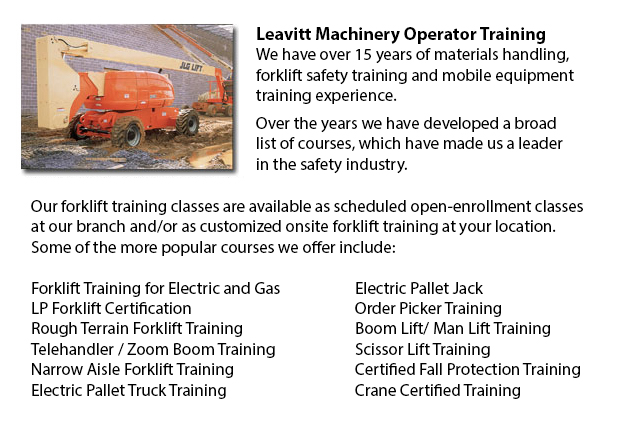
Kingston Aerial Lift Certification - Aerial Lift Certification is for those who need an in-depth understanding of aerial lift safety. Operators and inspectors, maintenance workers, construction craftsmen and supervisors must perform a training and certificate program. State, federal and provincial rules need companies to be certified in order to perform in-house aerial lift inspections.
Regardless of differences in the kind of work being performed, all workers who perform tasks at elevated levels usually use the same means to access the required height. Aerial lifts and scissor lifts are the mechanized devices used in order to lift employees and equipment to elevated worksites.
Bucket trucks called Cherry Pickers are aerial platforms that feature a supported boom and bucket. The primary danger to utilizing this particular kind of platform is usually tip-overs, falls and electrocutions. Certification ensures that workers who use aerial lifts are properly trained to work the machine safely. Training also ensures that workers know how to maintain aerial work platforms based on the instructions of the manufacturer.
Aerial lift training certification programs will include the following: Aerial lifts that are mounted to vehicles, Boom-supported scissor lifts and aerial lifts. Trainees would know about safe operating procedures and would gain knowledge about the dangers that often cause aerial lift incidents. They will become technically competent in the different kinds of aerial lifts, as well as terminology and parts. From interpreting rated capacity charts to selecting the right aerial lift for the task, the certification program will provide employees with all that they should know to perform their work safely.
Inspectors and supervisors who have the responsibility to inspect aerial lift devices should know how to check gears, booms, operating mechanisms, structural components, control systems and functions, power plants, braking systems, attachments, shafts and pins, hydraulic, electric and pneumatic components, emergency safety devices and operator aids, etc. Training will comprise the following: the inspector's role in reducing liability exposure and accidents; monthly and annual check; how to perform a pre-use; how to write inspection reports; how to apply and interpret rules about aerial lift safety standards; inspection procedures, techniques and checklists; applying and understanding the three levels of aerial lift inspection; following record keeping requirements; and when to remove aerial lifts from service if they are defective.
-
Narrow Aisle Forklift / Order Picker Training / Electric Pallet Jack / Electric Pallet Truck Training in Kingston
A pallet lift is a piece of equipment dedicated in the moving of pallets of various dimensions and weights. They might be utilized as an accessory for forklifts, cranes and other styles of heavy machinery or be applied on their own. Pallet lifts are... More -
Kingston Forklift Training School
Kingston Forklift Training School - Forklift Training School - Industry and federal regulators have established the criteria for forklift safety training based on their existing regulations and standards. People wishing to operate a forklift must fin... More -
Kingston Scissor Lift Certification
Kingston Scissor Lift Certification - Scissor lift platforms are utilized at work locations to enable tradespeople - such as iron workers, welders and masons - to reach their work. Making use of a scissor lift platform is usually secondary to their t... More -
Kingston Boom Lift Safety Training
Kingston Boom Lift Safey Training - Boom lifts are a type of elevated work platform or aerial lifting device that are normally utilized in warehousing, construction and industry. Boom lifts could be made use of in practically whichever environment du... More -
Kingston Fall Protection Ticket
Kingston Fall Protection Ticket - Fall-related incidents are the number one reason of death in the construction business. The possibility for fall accidents very much increases based upon the type of work which is being accomplished within your workp... More -
Telehandler Training in Kingston
Telescopic handlers normally called telehandlers for short, are an extremely popular piece of heavy construction machinery. They are widely utilized in the construction and agricultural trades. These machines have farthest reaching ability and are ab... More -
Kingston Warehouse Forklift Training Programs
Kingston Warehouse Forklift Training Programs - Warehouses could either be retail, industrial or commercial facilities, functioning from bulk product retailing to product distribution services. Regardless of the type of warehouse, personnel inside wa... More -
Kingston Heavy Equipment Ticket
Kingston Heavy Equipment Ticket - Depending on the nature of the job at hand, the kind of construction machinery that a heavy equipment operator utilizes varies. Every type of equipment is built to do particular jobs in the most effective method comm... More

Forklift Certification Kingston
TOLL FREE: 1-888-254-6157
Kingston, Ontario
forkliftcertificationkingston.com
Email Us
About Us


